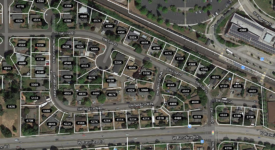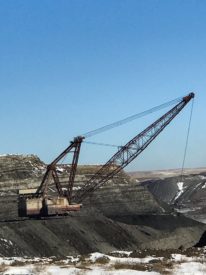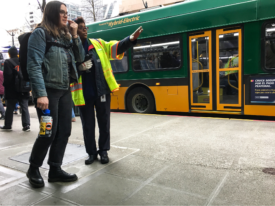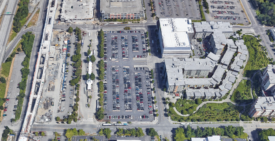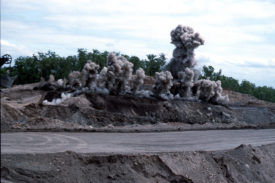Eric:
Via the good folks at STB, I thought the imagery here was arresting.
One trend I’m fascinated by is the rather alarming divergence in life expectancy among Americans. It’s going up for many, but not all. For lower income people, as well as for a huge swath of the South, life expectancy has either plateaued or is actually falling. It’s interesting too that even the top income earners in the US only live about as long as the average Canadian.
On a more personal lifespan-related note, I was fascinated to read about research indicating that non-human primates also appear to experience a mid-life crisis. As Kevin Drum instructively puts it: “hairless middle-aged apes are still middle-aged apes.” (The underlying LA Times article is well worth reading too.)
Via Joe Copeland, ground-breaking research from Seattle Children’s Hospital documenting an association between reduced birth weights and the proximity of mom’s home to a highway. The study looked specifically at the Puget Sound region, but it was apparently the first of its kind in the US. This seems like something that demands further research.
In that hippie hotbed of eastern Oklahoma, a port authority is backing out of its marina lease owing to a coal dust epidemic from stockpiles at a nearby power plant plus traffic problems arising from coal trains that routinely blocked the street. Just something to chew on, Cascadians.
In other coal news, the Washington Post takes a look at the demise of coal-fired power plants in the US.
Alex Steffen has a new book out called “Carbon Zero.” It’s a look at the strategies cities will need to deploy to reduce carbon emissions drastically in the coming years. (You can read more about it at Grist and Treehugger and you can purchase the ebook at Amazon.)
Lastly, in an excellent bit of reporting from the Seattle Times’ Mike Lindblom, a look at the performance of the new “BRT” line serving Seattle’s Ballard neighborhood. To summarize, the new D Line is about 1 minute faster than the local bus that it replaced. That may not seem like much for all the investment it received, but on the plus side it also has fewer stops, fewer seats, no arrival schedule, and uncertain trip length. To accomplish this feat, Metro reduced the much faster express bus service to Ballard and also trimmed key lines like the 17 and 18 that serve residential areas.
As I have said before, I simply fail to understand why we can’t just do the boring unsexy stuff with transit that actually works. Those buses that are jam packed to and from downtown every day? Let’s add more of them and see if we can make them a bit faster and more predictable.
Alan:
This week, all my weekend reading (and viewing) suggestions are courtesy of Sightline friends. Sightline Trustee Valerie Tarico has written a moving tribute to Savita Halappanavar. Sightline Director Gordon Price shares this impressive “sounds of Vancouver” video and points out the astonishing degree to which the sounds of northern Cascadia’s great metropolis are the sounds of public transit. Former Sightline trustee Jeff Youngstrom clued me in to this inspiring photographic accomplishment: slow-motion footage of cheetahs running. Wow! He also pointed out this video from Australia promoting railway safety in an utterly unconventional way. Sightline donor Matt Leber pointed out Rain Drop, the disaster film – actually an infographic. Sightline donor Ed Mills suggests this insightful little essay about the disappearance of the repair economy. Friend Laura Hirschfield tossed me a link to this photo essay about a prophetic art project that marked a high-water mark on New York City long before Sandy struck. Finally, on a lighter note, Sightline hero (and donor) Paul Hawken shared this hilarious parody charity video, in which Africans sing a song about sharing their warmth with Norway: “frostbite kills too.”
Clark:
Sixty years of US economic history in one chart.



